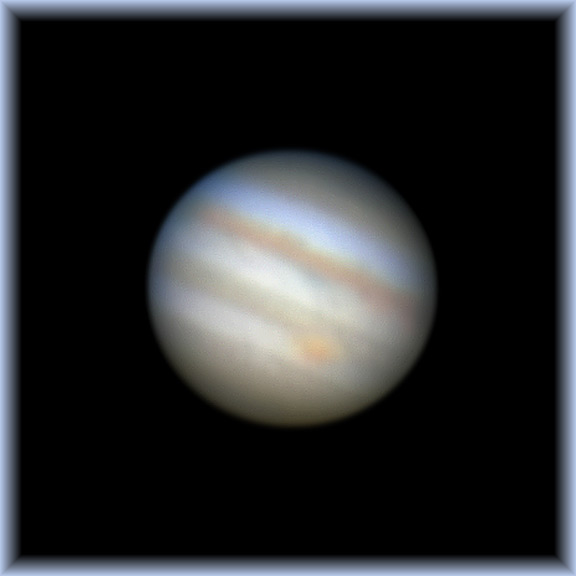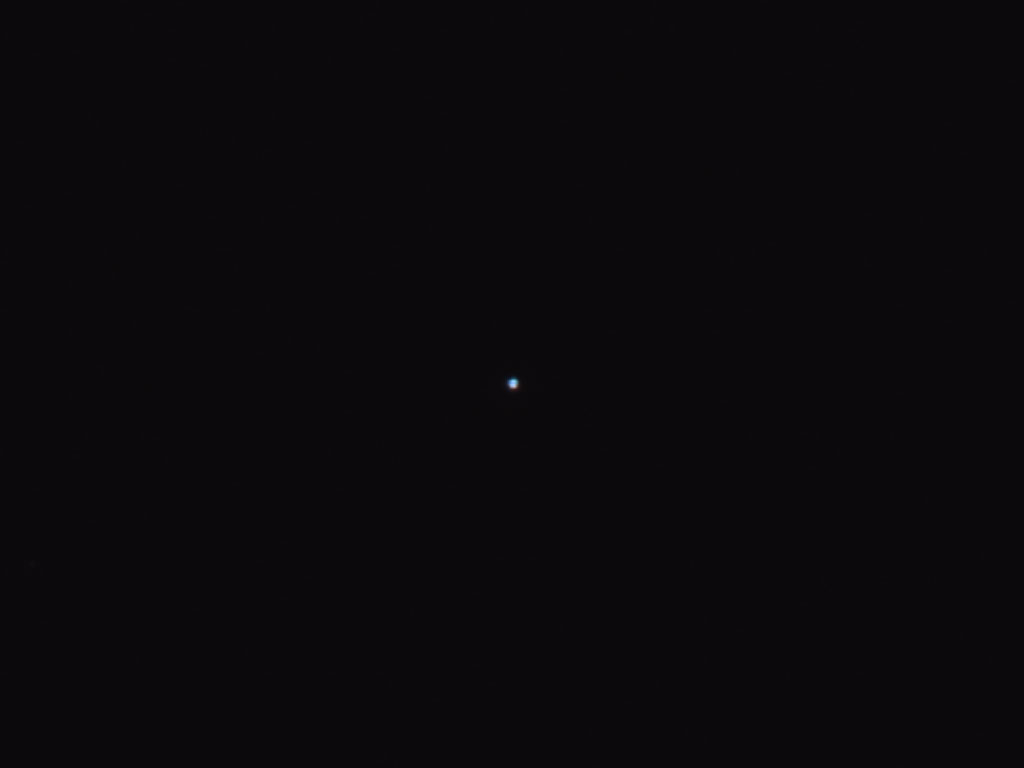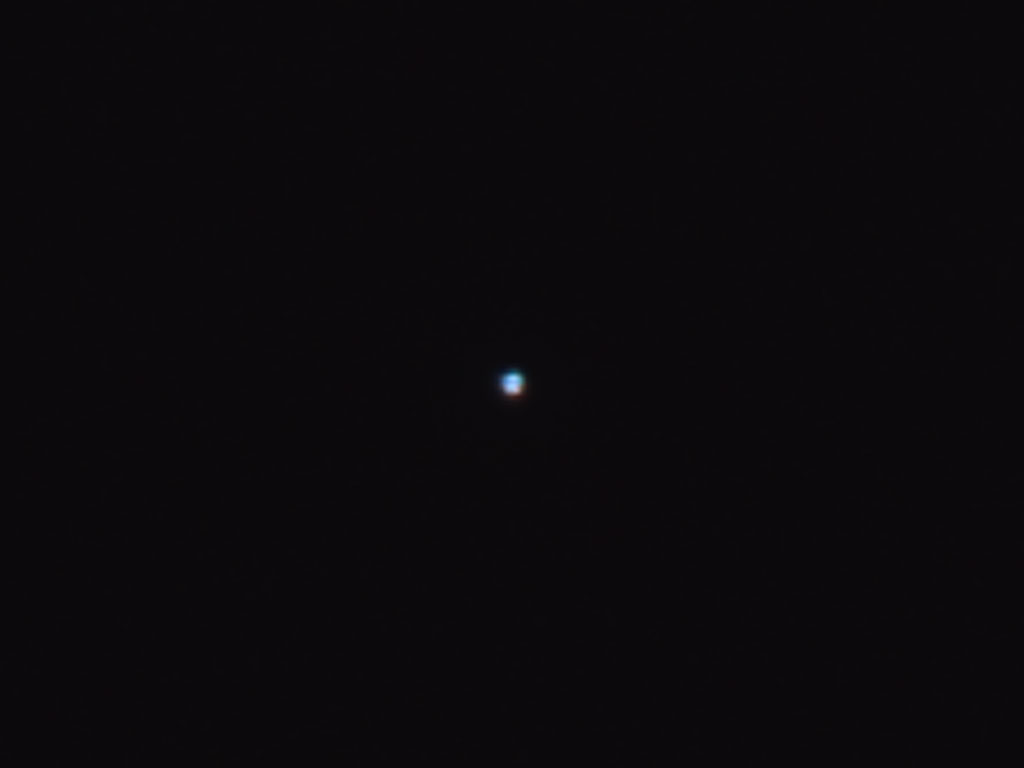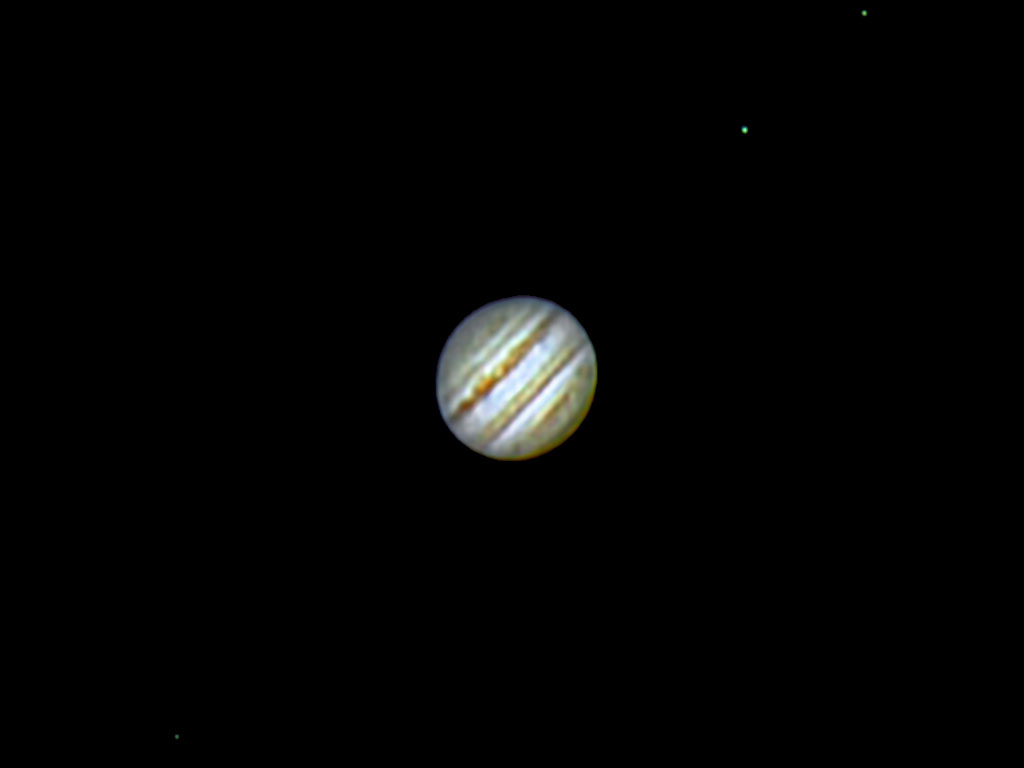| Exploring our own back yard. |
|
| |
|
| Neptune |
|
Neptune is the eighth planet from the Sun. The Earth’s average distance from the Sun is 93 million miles;
Neptune’s average distance from the Sun is 2.8 billion miles. At that distance it receives far less of the
Sun’s energy, and the temperature doesn’t vary much—it stays at about 353° F below zero, making it the
second coldest of the planets. Pluto’s* temperature goes as low as 387° F below zero. In either
instance you will want to take a nice, warm sweater when you visit. Neptune’s equatorial
circumference is about 96,000 miles, compared to the Earth’s 24,000 miles. Neptune’s year,
the period required for one complete orbit of the Sun, equals nearly 165 Earth years, but its day is
only 16 hours long.
The photo below is the same one as above, but it has been enlarged 4X in Photoshop to reveal some white
areas that may represent weather patterns on Neptune. The apparent bulge at about the 5:00 position is
probably Triton, the largest of Neptunes 13 known moons. Triton was once measured as the coldest
place in the Solar System, at 391° F below zero.
|
|
|
*The International Astronomical Union (IAU) ruled in 2006 that Pluto is not a planet, but a member of a class of Solar-System objects known as dwarf planets. I am neither qualified nor disposed to debate that decision. Though I am an amateur astronomer, I am, as a practical matter, bound by certain IAU conventions if I am to be understood by my peers. I cannot, for example, refer to NGC 6853 as the Billy-Bob nebula. In the case of the IAU's arbitrary decision to reclassify Pluto, however, I am freed from rigorous adherence to IAU practice by the familiarity of the object: Pluto is Pluto, and it is not subject to being confused with the planet Mercury, for example. Thus, in my vocabulary,
it is still “the planet Pluto,” not “the Kuiper-belt dwarf planet Pluto."
|
|
|
|
| Jupiter |
|
This photo pretty much explains why I concentrate on deep-sky photography and not Solar-System photography. Solar-System photography is too hard! I required much assistance from my friend Gerry Doyle in capturing this photo of Jupiter on the night of 15 August, 2009. Gerry, who was visiting from his home in the UK, knows a great deal more about photographing planets than I do. Made with a Philips ToUCam Pro webcam on a Takahashi TOA-150 refractor with a 1.6X focal extender. This was, effectively, First Light for the TOA-150. The visible moons are, lower left to upper right, Europa, Ganymede, and Io. Callisto was too far to the upper right to be captured at this image scale.
|
|
| |
|



